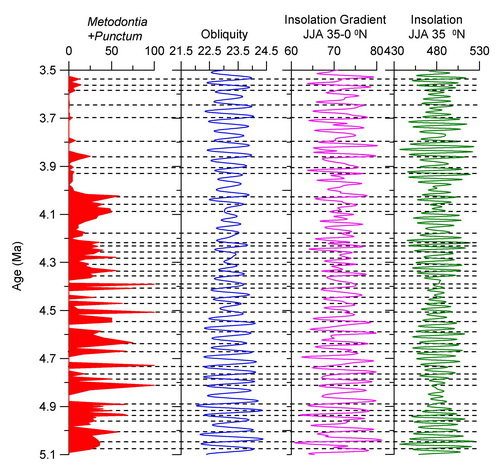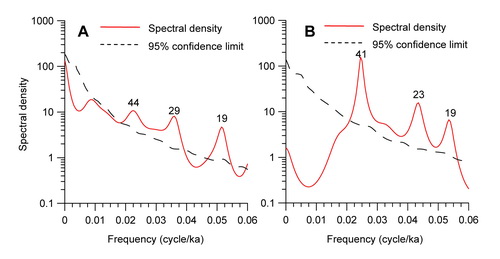Fossil land snails are the most common and abundant fossil remains in the eolian deposits in the Chinese Loess Plateau (CLP). They are very sensitive to environmental changes and have long been used as ‘indicator animals’ in palaeo-climatic studies, providing biological evidence for palaeoenvironmental reconstructions. The eolian deposits in the CLP provide great potentials for reconstructing a unique long land snail sequence of the past 22 Ma. For a long time, studies of fossil land snails have been focused on the Quaternary loess-paleosol sequences, and litte is known about the Miocene-Pliocene period.
More recently, Fengjiang Li and Naiqin Wu from the Institute of Geology and Geophysics, Chinese Academy of Sciences present a terrestrial mollusk record, based on 152 assemblages comprised of ~30 kg sediment each, from the Dongwan loess-paleosol sequence spanning the interval from 5.1 to 3.5 Ma. Results show that most peak values of the dominant thermo-humidiphilous mollusk taxa, Metodontia and Punctum, a proxy of the East Asian summer monsoon, approximately correspond to maxima of mean summer insolation gradient between middle and low latitudes as well as some maximum values of the 35° N insolation (Fig. 1), suggesting a possible causal link between the summer monsoon and the insolation parameters. The major frequencies from spectrum analysis of the sum of the two warmth- and moisture-loving taxa through the loess-palaeosol succession match those obtained from the mean summer insolation gradient variations between middle and low latitudes over this geological period (Fig. 2), providing further evidence for such a causal relationship. Mean summer insolation gradient between middle and low latitudes could influence atmospheric circulation (in the present condition the East Asian summer monsoon). Any elevated mean summer insolation gradients between middle and low latitudes would have intensified the East Asian summer monsoon and the flux of moisture and heat over the oceans to the interior region including the CLP, creating favorable conditions for the expansion of the mollusk fauna. As such, the mollusk record from the loess-palaeosol deposits in the western CLP provides evidence for insolation-gradient impacts on the development of the East Asian monsoon system in the Pliocene.

Fig. 1. Comparisons among thermo-humidiphilous mollusks (Metodontia and Punctum), obliquity, mean summer insolation gradient between 35˚N and 0˚, as well as mean summer insolation at 35˚N. Obliquity and insolation data are from Laskar et al. (2004).

Fig. 2. Spectrum analysis of the dominant thermo-humidiphilous mollusks group (Metodontia and Punctum) (A) and mean summer insolation gradient between 35˚N and 0˚(B) from 5.1 to 3.5 Ma.
This study has recently been published in Global and Planetary Change (Li and Wu, 2010. Pliocene land snail record from western Chinese Loess Plateau and implications for impacts of the summer insolation gradient between middle and low latitudes on the East Asian summer monsoon. Global and Planetary Change 72, 73-78).